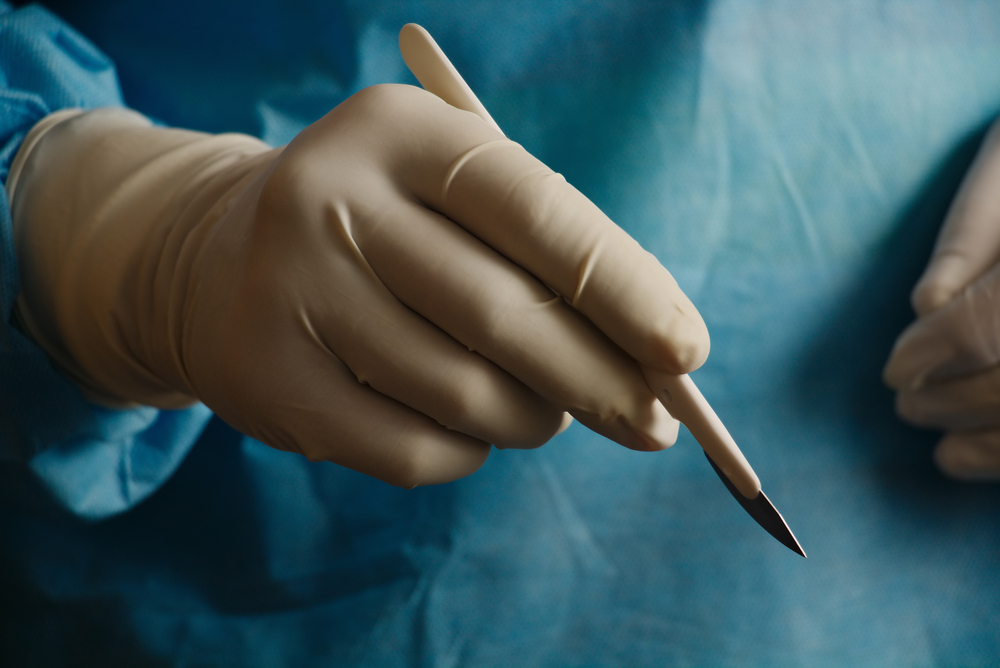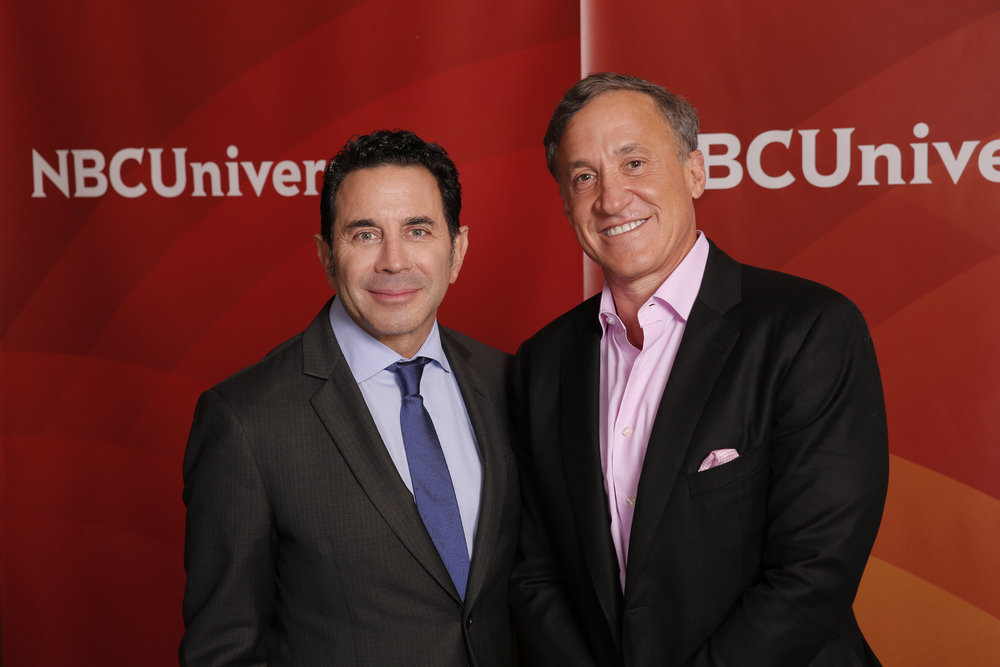Overly high foreheads can result in an unbalanced facial appearance, cause you to look older than you really are, or detract from otherwise proportional features.
Large foreheads may be caused by a range of reasons such as genetics, hair loss (alopecia) or prior surgical procedures.
If you feel insecure, lack confidence, or are tired of wearing awkward hairstyles to disguise your forehead, there is in fact a cosmetic procedure that can help — forehead reduction surgery.
What Is Forehead Reduction Surgery?
Forehead reduction surgery, also referred to as hairline advancement surgery, hairline lowering surgery or foreheadplasty, reduces the size of an elongated forehead by removing a portion of the forehead skin and creating a lower hairline. The distance between the hairline and the eyebrows is effectively reduced. The extent to which the hairline may be advanced depends on variables such as hairline height, scalp laxity and the patient’s preferences.
Typically, the female hairline should begin between 4 and 6cm above the eyebrows, at the transition point between the vertical forehead and where the forehead slopes backwards towards the scalp. Forehead reduction surgery can help patients by bringing the hairline to a more pleasing position, thereby restoring facial harmony.
Foreheadplasty holds a variety of benefits:
- Shortens the distance between the eyebrows and hairline, restoring proportion and balance to the face
- Can be performed in conjunction with a brow lift, which smooths most forehead wrinkles
- Overall improved appearance
- A more youthful appearance
- Reduction of temporal hair loss
- The alleviation of wrinkles in the upper forehead
- Alteration of the hairline (for example, surgery can eliminate or create a widow’s peak)
Am I a Candidate for Hairline Lowering?

Individuals who are unhappy with the size of their forehead are strong candidates for this procedure. Generally, women are likely to enjoy better results as they do not suffer from hairline recession to the same extent as men.
However, men can still benefit from surgery but first require a thorough assessment to determine their suitability. Men who undergo forehead reduction surgery need to be cognizant of the progressive nature of hair loss in males, and realise that further procedures such as hair transplants may be necessary to maintain optimal results.
For men who are undergoing facial feminization surgery (FFS), the forehead reduction procedure is key to achieving a more feminized facial appearance.
The best candidates for forehead reduction surgery will fit some of the following criteria:
- A high hairline and a large forehead
- Individuals with low or heavy brows, as in some cases forehead reduction surgery can help elevate the brows to a more attractive position
- Individuals with supple forehead skin and scalp that has a certain degree of laxity
- Individuals in a sound state of mental and physical health
- Individuals with realistic expectations about what surgery can achieve
- Men with thick hair density and no family history of hair loss
- Men who have a new hairline created by hair grafting
Finding a Surgeon
Finding the right surgeon to perform your forehead reduction procedure is crucial. Forehead reduction surgery is a specialized procedure: there are many specific details that require careful consideration, such as:
- Incision angles
- Variations in the direction of hair growth
- Scalp flexibility
- Ensuring that scars are well hidden and heal cleanly
- The preservation of the blood supply
Locating a surgeon who has considerable experience and specialization in the procedure will help ensure you enjoy beautiful results. You should also select a surgeon who:
- Holds American Board of Plastic Surgery (ABPS) certification: Board-certified surgeons must undergo rigorous training, stay current and up-to-date with advances in their field, and observe the highest standards of patient safety.
- Uses approved surgical facilities. Clinics or ambulatory facilities that have JCAHO, AAAHC or AAAASF certification observe high standards in patient safety and well-being and have equipment on hand in case an emergency arises.
- Has a professional but personable manner: you should feel at ease to ask questions and have them answered comprehensively in a way that you can understand, and be informed of any risks or complications. Your surgeon should also be clear about the kind of results you can expect by showing you before and after photographs.
How Much It Costs
On average, you can expect to pay $9,000 for forehead reduction surgery. However, there are different variables that will affect the final total:
- Where your plastic surgeon is located (those operating in larger cosmopolitan areas tend to charge more because of higher overhead costs)
- The reputation/experience of your surgeon
- The complexity of your particular case (more complex surgical cases, such as those where the forehead needs to be lowered a significant distance, or where the skin is very taut, take a longer time to complete)
- Whether or not a tissue expander (to stretch the skin) is required
- The cost of anesthesia, nurses and operating facility fees
Booking a consultation with a surgeon is the best way to gain an accurate idea of how much you can expect to spend.

RELATED: Zwivel’s Complete Guide to Brow Lift Surgery
Preparing for Forehead Reduction Surgery
Being in the best possible state of physical and mental health prior to surgery is one of the most effective ways to ensure the best possible outcome.
Here are some tips to help you prepare for surgery:
- Disclose your complete medical history to your surgeon. It is particularly important you let your surgeon know if you suffer from an eye-related condition like glaucoma, dry eye or detached retina. Other medical conditions such as high blood pressure, a history of keloid scars or circulatory disorders should also be shared with your surgeon.
- Inform your surgeon of any previous plastic surgery you have had performed: for example, if you have had a coronal brow lift this will render you unsuitable for forehead reduction surgery.
- Let your surgeon know all of the medications you are taking. You will be instructed to cease taking aspirin and anti-inflammatory medication such as Advil several weeks prior to surgery to minimize bleeding and bruising.
- Your surgeon will also provide you with a list of over-the-counter medications or health supplements to avoid. Some natural medications and vitamins may exacerbate bleeding.
- Avoid alcohol and salty foods for the week leading up to surgery to decrease fluid retention and swelling.
- Stop smoking at least one month prior to surgery. Smoking can have a detrimental impact on your healing from surgery and in some cases, even cause tissue death (necrosis).
- Get into an optimal state of health before surgery: eat nourishing and wholesome food, rest, exercise, drink plenty of water. A healthy mind and body will help guarantee a quick recovery and expedite healing.
By carefully adhering to your surgeon’s preoperative guidelines before your forehead reduction procedure, you can do your part to guarantee the best possible results from surgery.
How the Procedure Is Performed, Step by Step

Forehead reduction surgery generally takes 2-3 hours and proceeds according to the following steps:
- The patient is sedated with local or general anesthesia, provided orally or intravenously.
- The surgeon marks the postoperative hairline and makes an incision. The incision is undulating or may follow a zigzag pattern to mimic the natural hairline.
- The skin above the marked line is excised to remove the excess forehead and the hairline is advanced.
- The wound is sutured using two layers of stitches or surgical clips to ensure clean healing with minimal scarring. Hair will eventually grow through these incisions, rendering the scar undetectable.
This skin removal method can lower the hairline by up to 5cm. In cases where the hairline has to be lowered by more than 6cm (a more invasive and complex procedure), a temporary tissue expander is used beneath the scalp.
A tissue expander is a balloon-like device, inflated with salt water, that helps to stretch the skin and grow new cells prior to surgery. After 4-8 weeks, the skin of the scalp increases due to the skin growth and stretching, and the expander is removed. In some cases, your surgeon will recommend that a small amount of hair grafting be performed at a later time to thicken the hairline and optimize results.
Forehead Surgery Recovery
Forehead reduction surgery doesn’t usually require a significant recovery period. Most patients feel well enough to return to work after several days of rest. There may, however, be some swelling and bruising that lingers for a few weeks around the forehead, head or even eye area.
During your consultation, ask your surgeon to show you pictures of patients at various stages of post-operative healing so you can gain an idea of what you will look like and what to expect.
The first week following surgery:
- Following surgery, your head will be wrapped in bandages to minimize pain and swelling. Leave the bandages on until your surgeon agrees they can be removed. Dressings must remain on the incision site until the stitches are no longer necessary.
- Ice compresses will help to relieve any pain and swelling. Prescribed pain medication will also help if you experience prolonged discomfort. You should report any severe pain to your surgeon.
- Some surgeons may prescribe antibiotics to reduce the likelihood of infection occurring.
- Keep your head in an elevated position when you sleep for the first few days after surgery.
- It is normal to experience some numbness in the front of the scalp behind the incision. This numbness could last a few days or endure for several months while the nerves grow back.
- Itchiness may occur around the incision line as the nerve endings grow back. This is a good sign that the scalp is healing.
- The sutures will be removed after one week if they are not of the dissolvable variety.
- You can wash your hair two days after surgery.
Longer term outlook:
- Some hair loss at the front of the scalp may occur 2-4 weeks after surgery. Following a ‘resting period’ of several months, the hair will grow back in.
- Avoid strenuous exercise such as swimming, lifting heavy objects, going to the gym or running for at least two weeks, or until your surgeon advises you that you can resume such activities.
- Swelling may remain for several weeks or months after surgery. People heal at different rates, but rest assured, all swelling will gradually subside.
Side Effects, Risks, and Complications
Similar to any surgical procedure, forehead reduction surgery carries risks. Honest communication with your surgeon about your medical history or any factors that may complicate your surgery or recovery can help to mitigate risks and maximize your results.
Be sure to also follow your surgeon’s advice as closely as possible before and after surgery: he or she will provide guidelines that will help you to safely prepare for the procedure and recover quickly afterwards.
However, some of the complications that can arise as a result of foreheadplasty include:
- Infection as a result of poor wound healing
- Bleeding
- Numbness at the incision site and in the front of the scalp until the nerves regrow; a small number of patients could possibly experience permanent numbness
- Fluid accumulation at the wound site (seroma)
- Facial asymmetry (this usually corrects itself as healing progresses)
- Visible scarring (in the rare instances that this does occur, hair grafts can conceal scars)
- Individuals with darker skin tones may be left with a lighter, white scar that’s not so easily concealed
- Bruising which may extend down to the eyes (bruising usually subsides within a couple of days)
- Hair loss around the scar: this may be temporary or permanent
- Loss of mobility and expression in the forehead area (the effects are similar to Botox). This loss of mobility should be temporary, but in some cases can be permanent
- Revision or secondary surgery may be necessary
Results

Fortunately, there is a relatively quick recovery time after surgery, meaning you will not need to wait long to enjoy your results. Any bruising or swelling will usually resolve quickly, and a few days following the procedure most patients can hide the fact they have had surgery and return to everyday life, enjoying their new look.
However, having realistic expectations of what you will look like after surgery is essential to enjoying the postoperative outcome. Remember, the change will appear more as a subtle improvement than a dramatic transformation. Ask your surgeon for advice about the best way to maintain and prolong your results.
Latest Techniques and Scientific Studies
A 2017 article published in the Archives of Aesthetic Plastic Surgery journal outlines innovative new techniques that are advancing and improving foreheadplasty. The study’s authors discuss the importance of preoperative design, notably the need to determine the quantity of forehead that can be reduced prior to surgery by using the ‘gliding test’.
The ‘gliding test’ requires the patient to lie down in a supine position as the surgeon first moves the scalp back and forth before pushing it down and measuring it with a ruler. The measurement can be used to inform the best location for a zigzag incision pattern inside the hairline, reducing the likelihood of unsightly scarring or an unnatural hairline.
Frequently Asked Questions
Is it possible to get a more rounded hairline with forehead reduction surgery?
A hair graft can be performed at a later date to round out the hairline and complement foreheadplasty. In some cases, it may be possible to perform the hair graft at the time of surgery, but better results are usually guaranteed by separating the two procedures.
Does forehead reduction surgery raise the eyebrows at all?
Generally, most forehead reduction surgical techniques will not raise the eyebrows noticeably. Some patients choose to undergo a brow lift at the same time as foreheadplasty for complete rejuvenation of the upper third of their face. It’s a good idea to check with your surgeon about the extent your forehead reduction will lift the eyebrows.
I have a very tight scalp and forehead. Does that mean I am not a good candidate for a forehead reduction procedure?
Even the tightest scalps can be treated to lower the forehead by 2-3cm. In some cases, however, a tissue expander will first be necessary to stretch the skin and encourage the growth of new cells. Your surgeon will be able to advise you about the best way to proceed based on your specific situation..
Can both men and women undergo forehead reduction surgery?
Women tend to be better candidates for forehead reduction surgery because their hairline is less likely to recede with age. However, if you are male with no family history of hair loss or recession you could still benefit from the procedure.
What risks are associated with foreheadplasty?
In the hands of a board-certified surgeon with experience performing the procedure, the chance of any complications occurring is greatly decreased. However, there have been rare cases of noticeable or raised red scarring, hair loss, permanent numbness, bleeding or infection resulting from this surgery.









